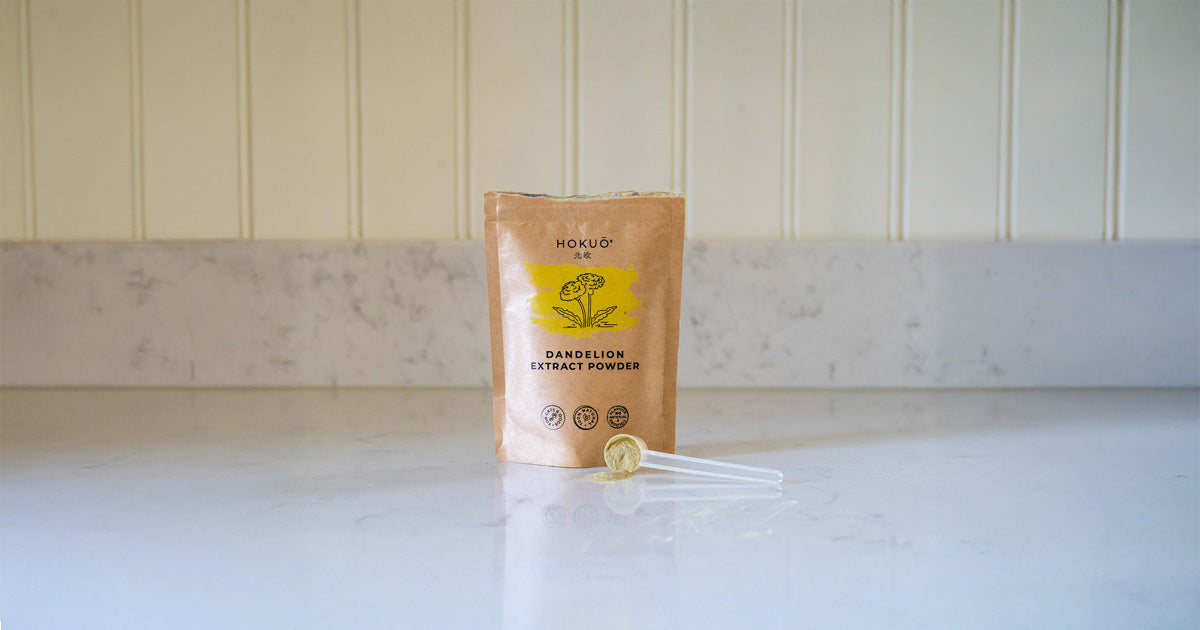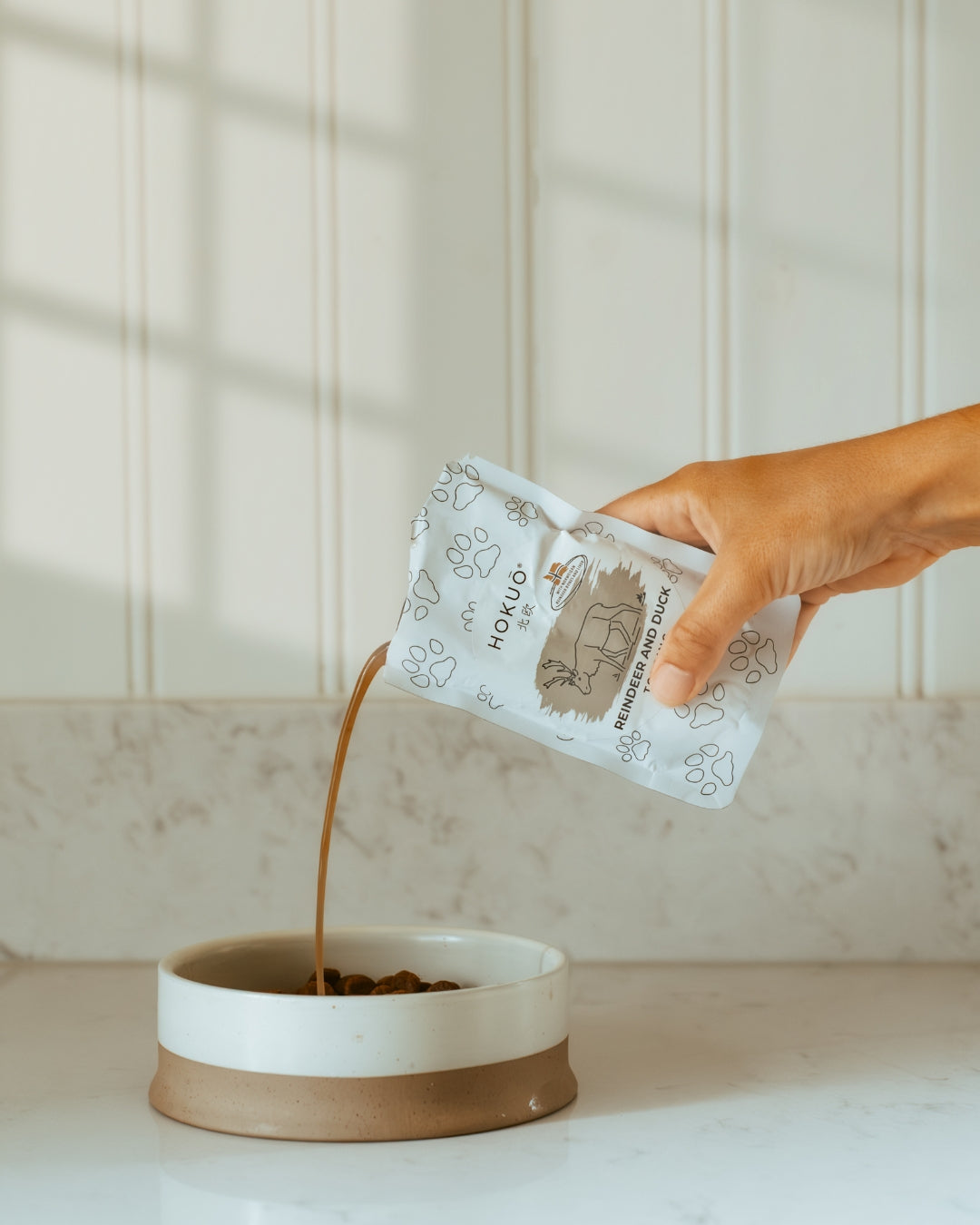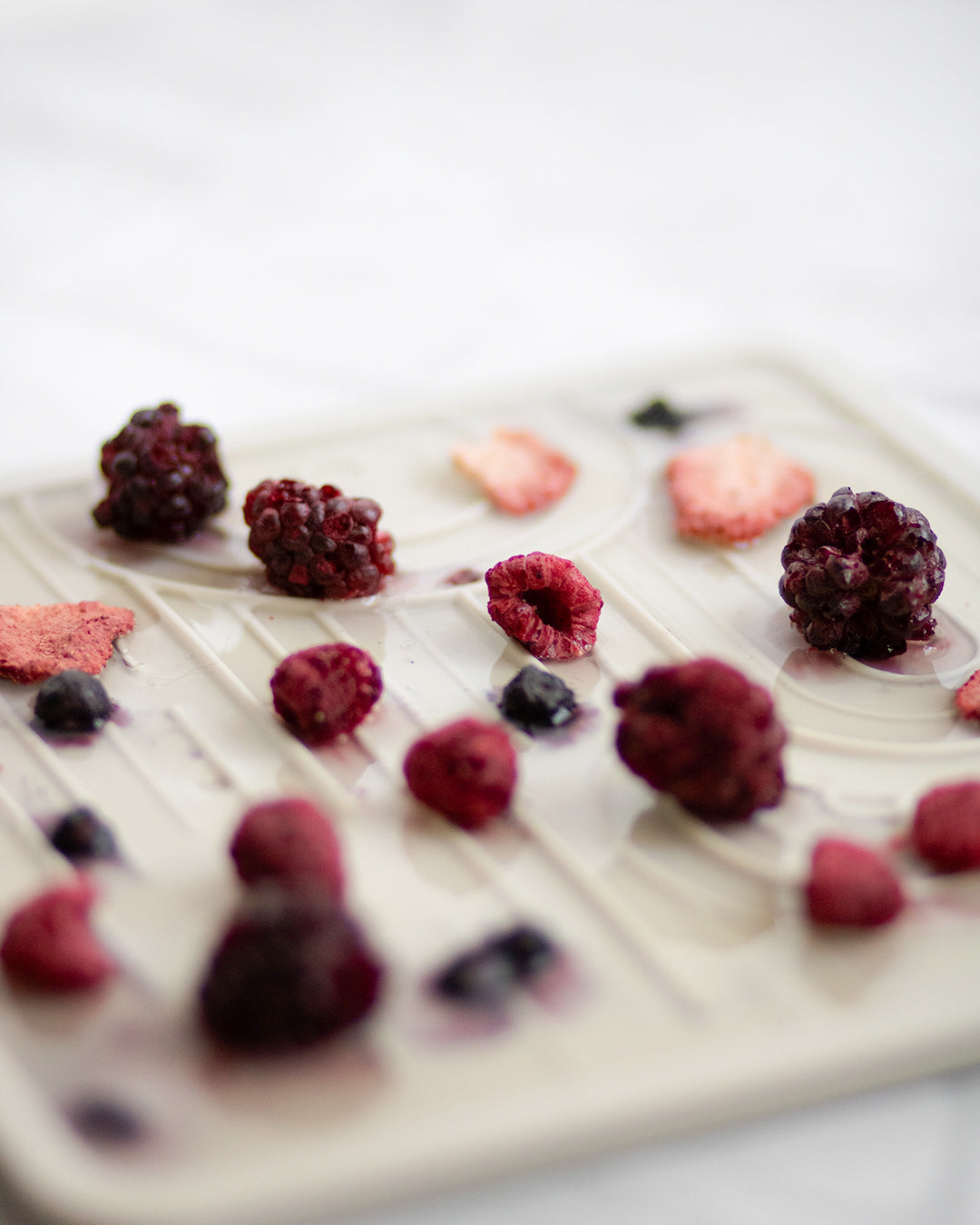Hvorfor al den snak om omega-3-fedtsyrer?
Hvis du ejer en hund, så har du sikkert mere end én gang været indblandet i en snak om hundefoder. Og chancerne er store for, at denne snak om hundefoder har udviklet sig til en snak om et helt specifikt næringsstof, nemlig omega-3-fedtsyrer. Men hvorfor er omega-3-fedtsyrer så hypede i hundefoder, hvad kan omega-3-fedtsyrer, som andre næringsstoffer ikke kan, og hvad skal man være opmærksom på, når man vælger omega-3-fedtsyrer til sin hund? Dette og meget mere skal du lære om i det følgende.
Indholdsfortegnelse
Hvad er omega-3-fedtsyrer? Hvilke omega-3-fedtsyrer findes der? EPA og DHA’s vigtige fysiologiske funktioner Det stopper ikke her Værd at vide, når du skal vælge, og opbevare et omega-3-tilskud til din hund Afslutning
Hvad er omega-3-fedtsyrer?
Omega-3-fedtsyrer er flerumættede fedtsyrer, som er nødvendige for en lang række fysiologiske processer. De tilhører gruppen af langkædede fedtsyrer og er derfor særligt reaktive og biologisk aktive. Denne information er vigtig at have i baghovedet, da den har betydning for, hvilke omega-3-tilskud du eventuelt skal vælge, og hvordan disse skal opbevares.
Da hunde ikke kan danne omega-3-fedtsyrer i tilstrækkelige mængder selv, skal de tilføres gennem kosten. Derfor hører omega-3-fedtsyrerne til de essentielle næringsstoffer.
See Product
Hvilke omega-3-fedtsyrer findes der?
De mest omtalte omega-3-fedtsyrer i hundeernæringssammenhæng er α-linolensyre (ALA), eikosapentaensyre (EPA) og dokosahexaensyre (DHA). Selvom alle tre fedtsyrer er omega-3-fedtsyrer, er det ikke lige meget, om man vælger den ene frem for den anden i hundens foder. ALA forekommer i mange vegetabilske olier, f.eks. i hørfrøolie, hampefrøolie og chiaolie, og kan i kroppen omdannes til de to andre omega-3-fedtsyrer EPA og DHA. Dog er hunde ikke særligt effektive til at omdanne ALA til EPA og DHA – kun ca. 5 til 10 % af ALA omdannes til EPA og mindre end 1 % til DHA. Derfor kan vegetabilske olier – på nær én – ikke erstatte olier eller andre ingredienser, som er rige på EPA og DHA. Og hermed kommer vi til de marine kilder til omega-3-fedtsyrer – det er nemlig dem, som indeholder EPA og DHA i betydelige mængder. EPA og DHA forekommer både i fisk, musling, krill og alger samt olier af selvsamme. Den eneste vegetabilske olie, som er rig på EPA og DHA er dermed algeolie.
Men hvorfor er det så vigtigt, at hunden forsynes med omega-3-fedtsyrerne EPA og DHA? Hvorfor er det ikke nok med en god planteolie, som er rig på ALA? Det er oftest både nemmere og billigere. Svaret ligger i den brede vifte af fysiologiske effekter, som EPA og DHA har på kroppen, men som ALA ikke har.
Selvom ALA er en essentiel fedtsyre på papiret, skyldes dens fysiologiske betydning primært, at den er forstadiet til EPA og DHA. Som allerede nævnt, kan hundens krop dog kun omdanne en minimal procentdel af ALA til EPA og endnu mindre til DHA. ALA er biokemisk set essentielt for hunde, fordi de ikke selv kan danne fedtsyren ud fra andre stoffer. Fysiologisk og klinisk set er den dog utilstrækkelig, og kan ikke dække hundens reelle omega-3-fedtsyrebehov, f.eks. ved betændelsestilstande i kroppen, under drægtighed og diegivning, til støtte for hjernens udvikling hos hvalpe og ved hud- og pelsproblemer. Dette har desværre en lidt uheldig konsekvens. Hvis du er en af dem, som af gode grunde (som jeg kommer ind på længere nede i teksten) går efter et lavt omega-6-til-omega-3-forhold, kan du ikke udelukkende stole på de tal, som foderproducenten oplyser om. Et forhold som 4:1 eller 3:1 (3 gange så meget omega-6-fedtsyrer som omega-3-fedtsyrer) virker umiddelbart rigtig godt. Problemet ligger dog i, at forbrugeren ud fra disse tal ikke kan vide, hvor meget af omega-3-fedtsyrerne der er ALA og hvor meget der er EPA og DHA. Hvis foderet udelukkende eller hovedsageligt indeholder ALA som omega-3-fedtsyrer, vil det ikke have den ønskede effekt på hunden, som forbrugeren baserer sin købsbeslutning på. På den positive side betyder det, at du faktisk ikke behøver at bekymre dig om, hvor din hund får ALA fra. Du kan derfor fuldt ud koncentrere dig om de to andre omega-3-fedtsyrer: EPA og DHA.
Wild-caught Baltic Sprat Graphic © Hokuō®
New Zealand Green-lipped mussel Graphic © Hokuō®
EPA og DHA’s vigtige fysiologiske funktioner
Betændelseshæmmende effekt
Den første gode grund er EPA’s betændelseshæmmende effekt. Og her kommer det førnævnte omega-6-til-omega-3-forhold ind i billedet. Arakidonsyre (AA), som er en omega-6-fedtsyre, og EPA omsættes i kroppen via de samme enzymatiske ruter, nemlig cyclooxygenase (COX) og lipoxygenase (LOX). Disse enzymer omdanner fedtsyrerne til eikosanoider, som er hormonlignende signalstoffer, der bl.a. har en betændelsesregulerende effekt. Når AA omdannes af de to førnævnte enzymer, dannes der hovedsageligt eikosanoider, som fremmer betændelse, smerte, feber og tiltrækker hvide blodlegemer. Denne proces er nødvendig ved en akut infektion, men for meget AA-aktivitet kan føre til en kronisk betændelsestilstand. EPA derimod omdannes af de samme enzymer til eikosanoider, som kan modvirke betændelsestilstande i kroppen. Og fordi AA og EPA konkurrerer om de samme enzymer for at blive omdannet til eikosanoider, vil en højere koncentration af EPA i blodet have en positiv effekt på hundens betændelsesstatus.
EPA og DHA er også forstadier til forskellige signalstoffer, som bl.a. aktivt afslutter betændelsestilstande, og fremmer vævsreparationen.
Denne betændelseshæmmende effekt af EPA og DHA er også årsagen til, at omega-3-fedtsyrer spiller så stor en rolle i behandlingen af slidgigt. Slidgigt er en lavgradig, kronisk inflammation i ledkapslen og -brusken. EPA og DHA’s betændelseshæmmende egenskaber fører til mindre hævelse, smerte og stivhed i leddene. Derudover har flere studier vist, at hunde med slidgigt, som fik tilskud af marine omega-3-fedtsyrer, gik bedre og længere, viste reduceret smerteadfærd, og havde mindre behov for ikke-steroide antiinflammatoriske lægemidler (NSAID). Derudover kan EPA og DHA potentielt forsinke udviklingen af slidgigten pga. deres reducerende effekt på brusknedbrydelsen.
Neurologisk udvikling og kognitiv funktion
De marine omega-3-fedtsyrer har ikke kun en betændelseshæmmende effekt – de spiller også en vigtig rolle, når det gælder hundenes hjernesundhed. Særligt DHA er afgørende for udviklingen af nervesystemet hos hvalpe samt for at vedligeholde den kognitive funktion hos ældre hunde. Dette undrer ikke, fordi DHA er et af hovedstrukturelementerne, og den mest forekomne fedtsyre i hundens hjerne. Forskellige videnskabelige studier indikerer, at hvalpe, som har fået et DHA-tilskud i deres foder efter fravænning, lærer hurtigere, har en forbedret kognition og en bedre hukommelse, sammenlignet med hvalpe, som ikke har fået et DHA-tilskud. Det samme gør sig gældende for hvalpe, hvis mødre fik et DHA-tilskud. Disse hvalpe klarede sig nemlig signifikant bedre i adfærds- og kognitionstests end hvalpe, hvis mødre ikke havde fået DHA i deres foder.
Det stopper ikke her
Og nej, de positive effekter stopper ikke her. EPA og DHA har også en støttende effekt på hudbarrieren og kan på den måde forbedre hundens hud- og pelssundhed. Hjertekarsystemet drager også nytte af de marine omega-3-fedtsyrer, og hos hvalpe forbedres ikke kun den kognitive funktion, når DHA inkluderes i foderplanen. Også synsudviklingen påvirkes positivt af denne vigtige omega-3-fedtsyre. Et nyere observationsstudie tyder på, at en inklusion af marine omega-3-fedtsyrer i hvalpes foder kan reducere risikoen for epilepsi signifikant.
Værd at vide, når du skal vælge, og opbevare et omega-3-tilskud til din hund
Vælg fiskeolier eller andre omega-3-tilskud, som stammer fra bæredygtige kilder, og testes og renses for forurenende stoffer som tungmetaller og PCB. Omega-3-fedtsyrer er meget følsomme over for oxidation (apropos særligt reaktive og biologisk aktive fedtsyrer). Oxiderede fedtsyrer er ikke blot ineffektive, men de kan faktisk også gør skade på hundens kropsvæv, når der dannes såkaldte frie radikaler. Totox-værdien (totox står for total oxidation) er et mål på oliens oxidationsgrad. Jo lavere denne værdi, des lavere er oliens oxidationsgrad. Vælg gerne et tilskud med en totox-værdi under 5. Desværre er det langt fra altid, at producenten oplyser om produktets totox-værdi. Opbevar dine omega-3-tilskud således, at de er beskyttede mod lys, varme og ilt. Opbevar dem i køleskabet og brug dem indenfor få uger.
Hundens omega-3-fedtsyrebehov kan også dækkes ved f.eks. at inkludere fede fisk i hundens foderplan. Alt efter mængden af fede fisk, vil det således ikke være nødvendigt at give et omega-3-tilskud. Ligeledes indeholder fuldfoder ofte marine omega-3-fedtsyrer. Disse er dog, ligesom omega-3-fedtsyrer i tilskudsprodukter, følsomme overfor oxidation, og det er derfor ikke sikkert, om de på fodringstidspunktet stadigvæk har den ønskede effekt. Dette vil afhænge af mange faktorer, herunder kvaliteten af omega-3-fedtsyrekilden i foderet, indpakning af foderet, lagring hos producenten, forhandleren og hundeejeren samt pakkestørrelsen og dermed tiden, som foderet er udsat for miljøpåvirkninger og evt. oxidation.
See Product
See Product
Afslutning
Næste gang, når du er i hundeskoven og snakken falder på hundefoder og omega-3-fedtsyrer, er chancerne store for, at du ved mere om omega-3-fedtsyrer end de andre diskussionsdeltagere, og kan komme med et godt råd eller to.
Kilder:
Antonelli, C. et al. (2023). Effects of docosahexaenoic acid dietary supplementation on cognitive learning and memory in healthy puppies. Animals, 13(20), 3261.
Bauer, J. E. (2011). Enhancing canine cognition with omega-3 fatty acids. Nestlé Purina Nutrition Forum.
Bauer, J. E. (2006). Therapeutic use of fish oils in companion animals. Journal of the American Veterinary Medical Association, 229(11), 1761–1764.
Bauer, J. E. et al. (2018). Evaluation of enrichment of diets with omega-3 fatty acids and effects on plasma fatty acid profiles in dogs and cats. Journal of the American Veterinary Medical Association, 252(12), 1470–1478.
Calder, P. C. (2017). Omega-3 fatty acids and inflammatory processes: from molecules to man. Biochemical Society Transactions, 45(5), 1105–1115.
Carlisle C. et al. (2024). The Effects of Omega-3 Supplementation on the Omega-3 Index and Quality of Life and Pain Scores in Dogs. Animals, 14(21):3108.
Freeman, L. M. et al. (2010). The role of nutritional supplements in cardiac disease. Journal of Veterinary Cardiology, 12(3), 149–155.
Fritsche, K. L. et al. (2010). Omega-3 polyunsaturated fatty acids and immune regulation. British Journal of Nutrition, 104(Suppl 2), S1–S9.
Heinemann, K. M. et al. (2005). Docosahexaenoic acid supplementation during pregnancy and lactation affects visual, cognitive, and behavioral development in dogs. Journal of Nutrition, 135(8), 1960S–1964S.
Hemida M. et al. (2023). Assessing the association between supplemented puppyhood dietary fat sources and owner-reported epilepsy in adulthood, among Finnish companion dogs. Frontiers in Veterinary Science, 10:1227437.
Lenox, C. E. & Bauer, J. E. (2013). Potential adverse effects of omega-3 fatty acids in dogs and cats. Journal of Veterinary Internal Medicine, 27(2), 217–226.
Logas, D. & Kunkle, G. A. (1994). Clinical response of canine pruritus to dietary supplementation with omega-3 and omega-6 fatty acids. Veterinary Dermatology, 5(3), 99–104.
Packer, R. M. A. et al. (2023). Fish-based fat sources in puppyhood are associated with reduced risk of idiopathic epilepsy in adult dogs. Frontiers in Veterinary Science, 10, 1202192.
Roush, J. K. et al. (2010). Evaluation of the effects of dietary supplementation with fish oil omega-3 fatty acids on weight bearing in dogs with osteoarthritis. JAVMA, 236(1), 67–73.
Shahidi, F. & Zhong, Y. (2010). Lipid oxidation and improving the oxidative stability. Chemical Society Reviews, 39(11), 4067–4079.
Zicker, S. C. et al. (2012). Cognitive and behavioral effects of dietary supplementation with fish oil in senior dogs. The Veterinary Journal, 192(3), 426–431.
Zicker, S. C. et al. (2012). Evaluation of cognitive function in puppies fed dietary docosahexaenoic acid. Journal of the American Veterinary Medical Association, 240(8), 935–941.
Skrevet af: Ann-Kristin Meyer
cand.scient. i Animal Science fraKøbenhavns Universitet med speciale i hundeernæring, Indehaver af HundeFoderNørden
3 Easy Summer Lickmat Recipes for Cats & Dogs
Read more
Bone Broth for Dogs and Cats: Liquid vs Dehydrated?
Read more
How Are Freeze Dried Treats for Cats and Dogs Made?
Read more








